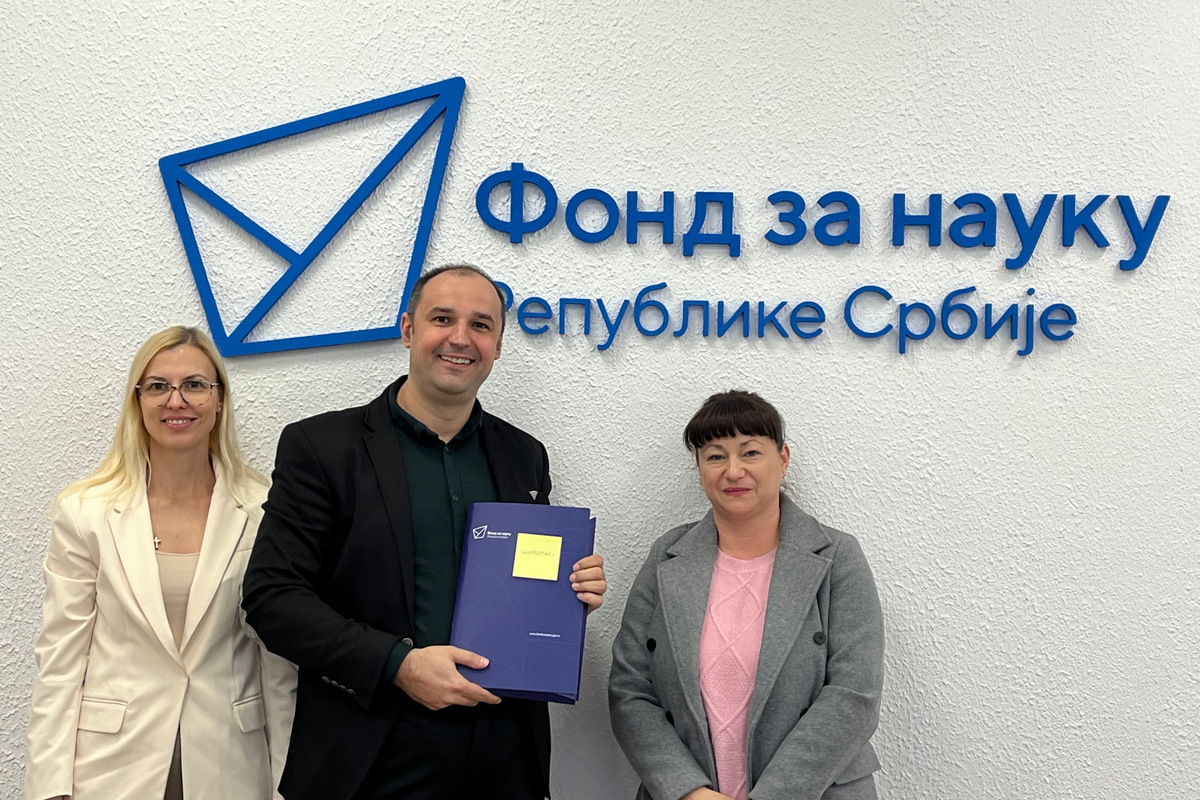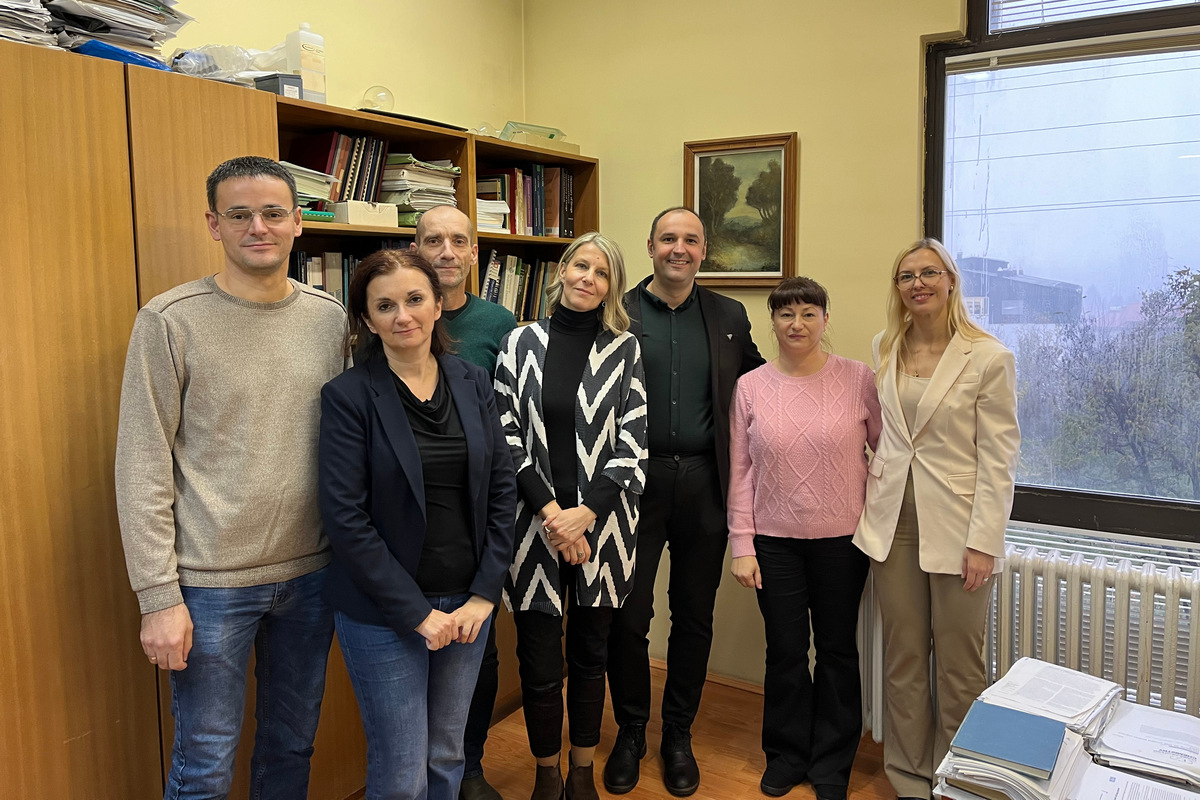Project Title:
Artificial Intelligence-Guided Design, Synthesis, and Pharmacological Evaluation of Innovative PROTACs as Degraders of HDAC4, an Epigenetic Target for Spinal Muscular Atrophy
Аrticle Author and Principal Investigator of the Project:
Dr. Milan Mladenović
Full Professor, Faculty of Sciences, University of Kragujevac

To understand what the SMAIPROTACs project wants to achieve, first, we need to go back to SMA’s etiology . Babies with SMA are born with a significantly reduced amount of a protein called SMN, which plays a key role in the development of motor neurons, responsible for transmitting signals from the brain and spinal cord to the muscles. In other words, the existence of the SMN protein is necessary for muscle contraction in the baby, and therefore for normal breathing, normal movements and normal neurological functions. The biosynthesis of the SMN protein is conditioned by the expression of two almost identical genes, SMN1 and SMN2. А fully functional SMN protein is obtained from the SMN1 gene, and SMA patients are born without the SMN1 gene. On the other hand, only 10-15% of the fully functional SMN protein can be produced from the SMN2 gene, which is not enough to prevent the disease from occurring. Also, during the patient’s life, the availability of the SMN protein from the SMN2 gene gradually decreases, leading to the death of motor neuron cells and resulting in the absence of nerve signals to the skeletal muscles (denervation) and a reduced ability for the muscles to contract.
Currently, the treatment of SMA is to restart the production of the SMN protein. Zolgensma™ as a gene therapy and the most expensive Dr.ug in the world, 2.125 million US dollars per therapy, is nothing but a part of the genetic material from a harmless adenovirus, which contains the SMN1 gene and which, when transfected into the baby’s genome, should stimulate biosynthesis of the SMN protein. All other approved therapies tend to initiate SMN protein bioproduction from the SMN2 gene. Unfortunately, this does not mean that all symptoms of SMA will disappear completely, and therefore very often babies cannot walk, or they can use their limbs with difficulty. The goal of the SMAIPROTACs project is to develop the so-called palliative therapy, i.e. therapy that will alleviate symptoms of SMA and speed up recovery if used with gene therapy or similar therapies.
The symptoms of SMA are further aggravated by a protein called HDAC4, which in muscles stimulates other proteins to cause muscle denervation and death. The SMAIPROTACs project will try to develop chemical molecules that will degrade HDAC4 in the cell and thus prevent muscle denervation and death in the first place. It would be a unique approach in the palliative treatment of SMA that has not been researched in the world so far.
The SMAIPROTACs project will develop such molecules using the so-called PROTAC technology. PROTAC molecules will have a double function: the first part of the molecule will locate the HDAC4 protein in the cell and bind to it, while the second part of the molecule will bind to an additional protein, the so-called E3 ligase, which will transfer the HDAC4 protein to special cell organelles called proteosomes, where HDAC4 protein degradation will take place. After the desired downregulation of the HDAC4 protein, the progression of SMA would temporarily) slow down, until the biosynthesis of a new amount of protein, because there would be no denervation and muscle death. We think that our PROTAC molecules would be very beneficial prior to, during, and after therapy with approved Dr.ugs and would greatly accelerate recovery from SMA.
The development of such PROTAC molecules will involve several phases. First, we will develop a part of the PROTAC molecule that will bind to HDAC4, the so-called HDAC4 inhibitor. By applying the explainable artificial intelligence, we will find out why known HDAC4 inhibitors (none of which have previously been tested against SMA) are active and how to chemically alter such inhibitors to increase their activity. We will then assign the Dr.ug design rules we come up with to generative artificial intelligence to design new, even more active HDAC4 inhibitors. We will predict the activity and toxicity of newly designed HDAC4 inhibitors using explainable artificial intelligence, synthesize molecules with the best-predicted pharmacology, and test whether they inhibit HDAC4 in laboratory conditions.
Considering that the SMAIPROTACs project is still in its initial phase, the results we have obtained so far are related to the rational design of new HDAC4 protein inhibitors, research into optimal synthetic routes, and preparation for pharmacological evaluation. More serious results in terms of developed PROTAC candidate molecules for clinical studies can be expected in two to two and a half years. If one of the developed PROTAC molecules enters clinical trials and is approved as a Dr.ug, the use of such a Dr.ug would significantly facilitate the recovery of babies from spinal muscular atrophy, and thus the quality of life of entire families would be improved. Serbian society would unite even more in the fight against rare diseases, knowing that they are effectively treated in Serbia. On the other hand, speaking of percentages, the number of chilDr.en suffering from SMA in Serbia is similar to that in each of the countries of the European Union or the world. Thus, the results of the SMAIPROTACs project would have global significance because the developed PROTAC molecules could be applied anywhere in the world as palliative therapy.
Program:
Program PRISMA
Scientific and Research Organizations:
- Faculty of Sciences, University of Kragujevac;
- Institute for Information Technologies, University of Kragujevac
- Faculty of Pharmacy, University of Belgrade
Project Budget:
EUR 284,781
Project Team Members:
- Dr. Nevena Tomašević, Teaching Assistant , Faculty of Sciences, University of Kragujevac
- Dr. Sanja Matić, Senior Research Associate, Institute for Information Technologies, University of Kragujevac
- Dr. Vladimir Savić, Full Professor, Faculty of Pharmacy, University of Belgrade
- Dr. Milena Simić, Full Professor, Faculty of Pharmacy, University of Belgrade
- Dr. PreDr.ag Jovanović, Associate Professor, Faculty of Pharmacy, University of Belgrade
- Dr. Gordana Tasić, Assistant Professor, Faculty of Pharmacy, University of Belgrade
